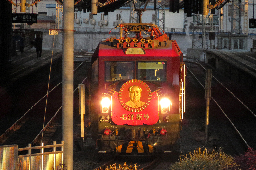What’s the environmentalist or progressive thinking on designing rural spaces?
I live on a farm and need my car/motorbike to get around.
Rural communities can’t be served by trains because the small population doesn’t justify the cost.
Are we supposed to have train stations every 30 miles, and park-and-ride everywhere? Should we be riding quad bikes instead of cars? Really my question is: is there a generally-agreed on set of principles for progressive rural design, like there seems to be for cities?
Isn’t American rural living uniquely spread out? In Europe and China for instance you’ll have rural villages/towns that are surrounded by farmland. That kind of settlement can be served by public transit.
Japan as well. All around the world, rural areas are served by transit systems. Usually trains connecting towns and then buses operating within towns. Our rural areas are less concentrated, but not less dense overall. The old town centers still exist across most of the country and they could easily be reconnected to a good train network and get buses running. Most of these rural towns were built on railroads in the first place.
In some states - NY, PA, VA, CA - there are rural towns that still have good rail connections, and those places are much healthier economically and socially than their disconnected counterparts.
Every gray dot in this screenshot is a small, dense, rural village surrounded by farmland.

My opinion on cars etc is that they are fine if they’re used for work. Work being last mile hauling, people who need to drive heavy tools around, farming, any sort of back country thing like maintaining wires or forests, etc.
I don’t think anyone envisions a world without roads or cars. It’s really more that probably 95% of what people use their cars for they don’t need to use their cars for. Especially in cities. Outside of cities though cars and trucks especially make a lot more sense, mostly to get between cities or get out somewhere that it isn’t feasible to build infrastructure for. Cars outside of cities and for work use only solves most of the problems with cars…it gets car infrastructure out of the way of people infrastructure, cuts down massively on noise and pollution, etc. A farmer isn’t going to need to drive downtown unless they’re making a delivery or setting up for a farmers market (last mile hauling) so farmers owning hauling vehicles makes a lot of sense.
Cars are just going to be a part of rural life by necessity, but there are still things we can do to help the situation.
There are plenty of old main streets in small towns that are pretty walkable. Prioritizing these sorts of layouts over stroads and strip malls is going to take cars off of roads.
Once you get rid of the idea that public transit should be profitable, buses can become a good way to get people to and from major destinations. Busses dont require a ton of ridership to be an improvement over cars and they can make use of car infrastructure. And for travel through busy parts of town, it’s relatively cheaper for a bus to get the right of way access for dedicated roads and bypasses.
Finally, intercity rail and BRT setups can get people between points of population quickly.
Some people will just have to drive and there’s no way around it. But in the ideal scenario, you might have a bus that passes through a few small neighborhoods of just a few houses each on the way to a nearby small town or factory. Once it reaches that small town, some folks get off to shop or hang out or attend an event, a few others hop an intercity rail that goes to nearby larger town or even the big city. Some folks will find themselves driving to the intercity rail, but if theyre using that rail (which may have high speed clearance), thats still fewer cars on roads.
This is how america worked in the first half of the 20th century, and theres no reason it can’t work today
Remember, before cars, every single place in the world was connected with either public transportation or walking. It worked then and it can work now.
I think there hasn’t been that much study on how to design rural spaces because they have already been mostly designed; we are just dealing with the affects of the local cultural design decisions. The last time that there seemed to be an interest in the actual design was a century ago as railroads opened up arable land.
Likely, the rural town would be preferred to living on the farm for various reasons including community cohesion and the interface of businesses to non-farming activities.
The communities should have local paths to allow for non-car traffic, including various bicycles or motorcycles. Trucks should be more like Japan’s small type then the USA’s big ones.
The town should have some public transit access. Rail was the preferred option, but you are probably only going to get an intercity bus nowadays. This will likely be some sort of park and ride, mainly geared to provide non-car connectivity to an urban area.
My grandparent and great-grandparent’s farms in the great lakes region literally DID have train stations within 10 miles of them, and they walked to them. Rural transit service isn’t a pipe dream, it’s something that actually existed.
That said: cars and trucks are obviously very useful in rural areas, and so I can imagine they will still be quite ubiquitous even in a future where rural areas are well served by transit. My grandparents did eventually buy cars, but they used the train service for long distance trips.
I would point you to Switzerland, which has probably the best rural transit in the world. While it’s definitely not a 1-1 comparison and rural people will definitely still need cars or at least bikes, rural areas and small towns are quite often connected with hourly or better bus service, sometimes even train service. As an example, here’s a station next to a field and a farmhouse that gets trains every 30 minutes in each direction. The railway is fully electrified and carries freight too. The Swiss timetable is designed to minimize transfer time with timed transfers, so you’re typically not waiting more than 10 minutes to make your connection between modes.
Now, Switzerland is a very rich country, but the principle of timed connections can make journeys to very rural areas quite feasible. You can have a train that has multiple buses timed to meet it, for example. This sets up a network of low-frequency buses that all meet at the train station to connect to the train, providing more ridership for the train and the buses, and allowing everyone to connect to the other services there.








